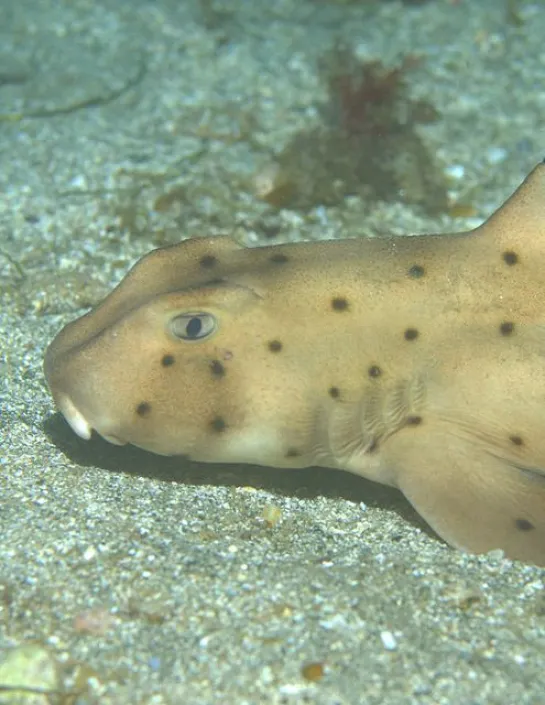Its dorsal fins are equipped with poisonous spines.
The eggs of the horned shark are characterised by their spiral shape, like a screw that allows the egg to attach itself to the hollows of rocks.

Sharks

Identity card
Not Evaluated
Temperate and subtropical seas of the Eastern Pacific. Coasts from California to Mexico. Ecuador and Peru.
It lives on the rocky or sandy seabed, in kelp forests, between the surface and 150 metres deep.
Adults grow to between 97 cm and 1.20 metres and weigh around 10 kg.
The horn shark feeds at night on shellfish, sea urchins, crustaceans and sometimes small fish.
12 years
Nausicaá participates in programs concerning the horned shark of a less involving level called ESB-European StudBook.

This shark is harmless to humans. But anyone hoping to catch one should be careful.
Its dorsal fins are equipped with poisonous spines.
The eggs of the horned shark are characterised by their spiral shape, like a screw that allows the egg to attach itself to the hollows of rocks.
The horn shark belongs to the family of bullhead sharks, so called because of their short blunt heads with ridges above the eyes. It is rather inactive and mainly comes to life at night to hunt. It can remain resting on the seabed for several hours, on rocks or hiding in a crevice. It does not swim far, like the nurse shark or the Australian carpet shark.
Horn sharks hunt by hiding in wait until their prey comes within reach.
The horn shark is a spotted shark that lives in kelp forests. It leads a quiet life, resting on the sea floor. It lives on the rocky or sandy seabed, in kelp forests, between the surface and 150 metres deep. It can also be found hiding in caves and near crevices.
The horn shark is brown in colour and has scattered black and brown spots. Adults grow to between 97 cm and 1.20 metres and weigh around 10 kg.
It has an impressively powerful jaw! This is because of the food it eats: it feeds on crustaceans and shellfish, and so needs to be able to crack open and crush the shells in order to feed.
MANKIND AND SHORES

The Ocean Mag
In the spotlight
A look back at the year's births at Nausicaá.

Article
The Portuguese Parliament has adopted a moratorium banning seabed mining in its territorial waters until 2050.
Article
Combining art, science and industry to restore coral reefs.